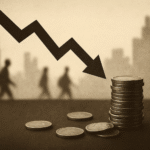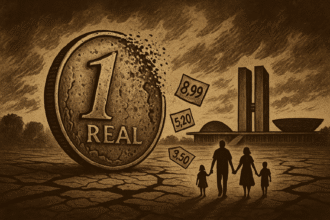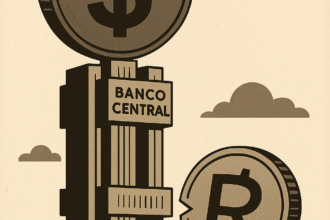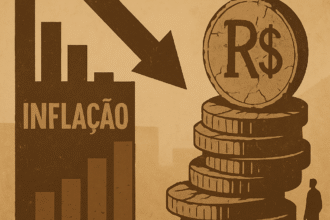If there’s one thing everyone seems to know, it’s that the government “prints money.”
But what does this really mean?
The common image is of printing presses running at full steam in the basement of the Central Bank, spitting out new banknotes to finance public spending. But the truth is more subtle — and more dangerous.
Printing money is not just about making paper. It is create purchasing power out of thin air, inflating the monetary base and, often, the illusion of growth.
📉 The mechanics of monetary creation
Today, most of the money that circulates in the economy does not exist physically. It's just a number on the screen: bank deposits, accounting credits, digital records.
Less than 4% of the monetary base in Brazil is made up of paper money.
Issuance occurs in two main ways:
- Directly through the Central Bank
- By buying government bonds, it injects money into the economy.
- By lowering reserve requirements, it frees up liquidity for banks.
- Indirectly through commercial banks
- Through the fractional reserve system, banks create money by granting credit, multiplying the original amount.
I.e: the State does not print paper — it authorizes, legitimizes and encourages the artificial creation of purchasing power.
💣 Why is this a problem?
Because, as Mises said,
“Creating money does not increase wealth. It only redistributes what already exists.”
When the government or banks create money, are not creating value. They are just distributing the existing purchasing power among more monetary units.
The result?
- The first to receive the new money benefit from still low prices.
- The latter — workers, savers, retirees — pay more without knowing why.
This is the Cantillon effect, described in the 18th century and ignored by much of modern economic policy.
📊 The State as a beneficiary of monetary fraud
If printing money were the solution, Venezuela would be a powerhouse.
But the emission serves another purpose: finance the State without resorting to direct taxation or political austerity.
When issuing currency, the government:
- Pay debts
- Finances deficits
- Supports populist programs
All without congressional approval, without public debate, without transparency.
In practice, It is the tax that does not pass through Parliament, but weighs on the Brazilian's plate.
🧠 There's no such thing as a free lunch
The belief that the state can “inject money into the economy” and generate prosperity is an economic illusion — and a moral crime.
There is no monetary magic. There is forced transfer of wealth, price disorganization, distortion of investments and destruction of private savings.
Rothbard was blunt:
“Printing money is a form of legalized counterfeiting. But when the government counterfeits, they call it 'monetary policy.'”
🧭 Conclusion
Print money is not a neutral or technical economic policy.
It is a political, ideological act, deeply unjust.
And the most serious: It is an act that destroys confidence in money as a means of exchange — and therefore in the market economy itself.
This is why, throughout history, all empires that abused the creation of currency ended up collapsing.
And that's why we started this series.
To state, bluntly, the myth of wealth created by decree — and the real price we pay for believing in him.





